Journal of Modern Physics
Vol.4 No.1(2013), Article ID:26700,6 pages DOI:10.4236/jmp.2013.41004
The Matching Conditions for the Distribution Functions of Boltzmann Equation in Nonequilibrium Transport
Department of Physics, Graduate School of the Chinese Academy of Sciences, Beijing, China
Email: wangzc@gucas.ac.cn
Received August 21, 2012; revised September 29, 2012; accepted October 9, 2012
Keywords: Matching Conditions; Distribution Funtion; Boltzmann Equation
ABSTRACT
Based on the equation of motion in nonequilibrium Green function formalism, the matching conditions for the distribution functions of Boltzmann equation at interfaces of metallic multilayers are investigated in the nonequlibrium transport procedure. We also explore the matching conditions when the current-induced spin accumulation is accounted for, the contribution of coulomb interaction due to accumulated electrons is included. In order to study the matching conditions in the position space, we generalize the tunneling Hamiltonian to the formalism in position space, the matching conditions in this case is then obtained, which is convenient for us to match the usual distribution function of Boltzmann equation.
1. Introduction
In the past few years, a number of theoretical studies had been carried out in the Boltzmann equation approach on the spin-polarized transport of electrons tunneling through a magnetic multiplayer [1-5], the spin dependent transport is found to exhibit the interesting giant magnetoresistance effect and the current-induced switching of magnetic layers. The usual way in the Boltzmann equation approach is to solve the distribution function in each layer and connect them between layers by use of the matching conditions, which has been well used to investigate the transport problem of collinear magnetic multilayers [3,6,7]. The matching conditions in the noncollinear case are also explored by introducing an artifice to account for correlations between states in different layers [8,9]. However, these matching conditions for the distribution functions at the interface of two layers are only given out in the equilibrium case or in the steady state, how to extend them to the nonequilibrium transport procedure is still an open question. Actually, it is worthwhile to study the matching conditions out of equilibrium, because most of spin-dependent transport procedure occurs in the nonequilibrium situation. Also, the current-induced spin accumulation will happen in the nonequilibrium case, the coulomb interaction among the accumulated electrons will have their contributions to the matching condition, which had been illustrated in the steady state [10].
In this paper, we try to obtain the matching conditions out of equilibrium in the nonequilibrium Green function formalism. The lesser Green functions in different layers are related by their equations of motion, which can lead to the matching conditions for the distribution function of Boltzmann equation after Wigner transformation. Meanwhile, if we consider the coulomb interaction among accumulated electron in the tunneling Hamiltonian, it’s contribution to the matching conditions can also be obtained. Finally, the matching conditions are also expressed in the usual position space.
2. Green’s Functions and Wigner Distribution Functions
Consider a Ferromagnet/Insulator (Semiconductor)/Ferromagnet (FM/I(S)/FM) tunneling structure with the Hamiltonian given by [11],
 (1)
(1)
where the contact (ferromagnet) Hamiltonian is
 ,
, 
is the creation (annihilation) operator of an electron of lead  with momentum
with momentum  and spin
and spin ,
,  is the single particle energy,
is the single particle energy,

is the Hamiltonian of central region,  creates (destroys) an electron with spin
creates (destroys) an electron with spin  in central region,
in central region,  is the tunneling coupling between contacts and the central region,
is the tunneling coupling between contacts and the central region,

It is well known that the Green function in the contact is defined as
 (2)
(2)
which satisfies the following equation of motion,
 (3)
(3)
where the Green function

which is determined by it’s equation of motion
 (4)
(4)
where  is the Green function of central region. After Fourier transformation to the variable
is the Green function of central region. After Fourier transformation to the variable  on both sides of Equation (4), it will turn to
on both sides of Equation (4), it will turn to
 (5)
(5)
with solution
 (6)
(6)
where  is the center of mass variable and
is the center of mass variable and
 is a constant which can be determined by the initial condition. Similarly, performing the same Fourier transformation to Equation (3), then substituting Equation (6) into it, we have
is a constant which can be determined by the initial condition. Similarly, performing the same Fourier transformation to Equation (3), then substituting Equation (6) into it, we have
 (7)
(7)
This equation relates the Green function of contacts with the Green function of central region.
Usually, the Wigner distribution function of quantum Boltzmann equation in contact and central region are defined as
 (8)
(8)
and
 (9)
(9)
respectively. Then from Equation (7), the distribution function  of contact and the distribution function
of contact and the distribution function  of central region can be connected together, it is
of central region can be connected together, it is
 (10)
(10)
which is exactly the matching condition between contact and central region in the nonequilibrium case. This complicated integro-differential condition about time  is in essence the equation of motion for the lesser Green function, so far we have arrived one of our results.
is in essence the equation of motion for the lesser Green function, so far we have arrived one of our results.
3. Matching Conditions
The above matching conditions (10) and the Hamiltonian (1) are given in the second quantization formalism. However, the usual matching conditions we use to connect the distribution function of Boltzmann equation in different layers is expressed in the position formalism. It is necessary to explore the matching conditions out of equilibrium in position space. For this purpose, we introduce the Hamiltonian of tunneling structure as

where  is the interface between the left contact and central region,
is the interface between the left contact and central region,  is the interface between the central region and the right contact,
is the interface between the central region and the right contact,  ,
,  and
and  are the potentials in the left contact, in the central region and in the right contact, the single particle energy corresponding to them are denoted as
are the potentials in the left contact, in the central region and in the right contact, the single particle energy corresponding to them are denoted as ,
, 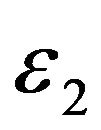 and
and , respectively.
, respectively. 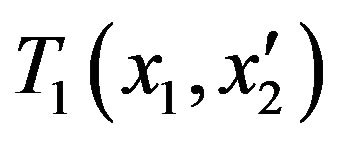 and
and  are the coupling coefficient between the contacts and the central region. In this case, we can define the lesser Green function in the contact as
are the coupling coefficient between the contacts and the central region. In this case, we can define the lesser Green function in the contact as
 (19)
(19)
which satisfies the following equation of motion
 (20)
(20)
where the Green function  is defined as
is defined as
 . From this definition, we can get it’s equation of motion by use of the Hamiltonian in position space, it is
. From this definition, we can get it’s equation of motion by use of the Hamiltonian in position space, it is
 (21)
(21)
where  is the lesser Green function in the central region,
is the lesser Green function in the central region,
 (22)
(22)
Usually, the Wigner distribution function in the Boltzmann equation is defined as the Fourier transformation of the lesser Green function [12-14].
 (23)
(23)
where  denote the spin indices,
denote the spin indices,  is the four dimensional momentum,
is the four dimensional momentum,  is the energy,
is the energy,
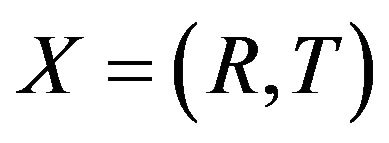 where
where ,
,  is the center of mass variable, the variable
is the center of mass variable, the variable , which represents the differences between two position and time variables entering these functions,
, which represents the differences between two position and time variables entering these functions,  and
and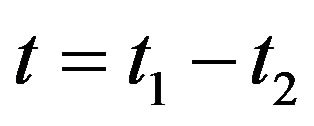 . Performing the above Fourier transformation to both sides of Equation (20), we have
. Performing the above Fourier transformation to both sides of Equation (20), we have
 (23)
(23)
where  is the distribution function in the contact, and
is the distribution function in the contact, and  is defined as
is defined as . We have adopted the gradient approximation in the Fourier transformation of the second term in the above equation [12-14]. In order to express
. We have adopted the gradient approximation in the Fourier transformation of the second term in the above equation [12-14]. In order to express  in terms of the distribution function of contact region
in terms of the distribution function of contact region , we write out the equation of motion for the Green function
, we write out the equation of motion for the Green function  as
as
 (24)
(24)
where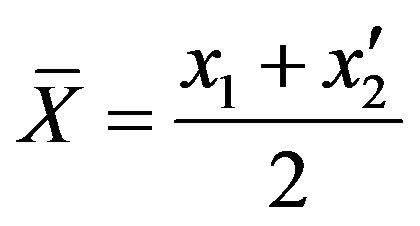 . The above equation is just the Fourier transformation of Equation (21). The variable
. The above equation is just the Fourier transformation of Equation (21). The variable  has relation with the variable
has relation with the variable  as
as
 ,
,
 is the position of electron before jumping from contact to central region, it is in the contact.
is the position of electron before jumping from contact to central region, it is in the contact.  is the position after jumping, which is in the central region. As we know, the jumping usually occurs as the electrons are near the interface, so
is the position after jumping, which is in the central region. As we know, the jumping usually occurs as the electrons are near the interface, so , then we can approximate
, then we can approximate . In this approximation, Equation (24) has solution
. In this approximation, Equation (24) has solution
 (25)
(25)
where  is a constant which can be determined by the initial condition. Substituting expression (25) into Equation (23), we finally obtain the matching condition out of equilibrium in the position space, which connects the distribution function
is a constant which can be determined by the initial condition. Substituting expression (25) into Equation (23), we finally obtain the matching condition out of equilibrium in the position space, which connects the distribution function  in the contact with the distribution function
in the contact with the distribution function  in the central region. Certainly, this matching condition is very complicated, it has simple expression in the steady state or in the equilibrium case.
in the central region. Certainly, this matching condition is very complicated, it has simple expression in the steady state or in the equilibrium case.
4. Conclusion
In summary, we have obtained the matching condition out of equilibrium for the distribution function of Boltzmann equation in different layers, which is based on the equation of motion method within the framework of nonequilibrium Green function formalism. The contribution of coulomb interaction among the accumulated electrons to the matching condition is also discussed, we compare it with the results in Reference [10]. Our research is in fact a microscopic model to illuminate the results in Reference [10]. The usual matching condition in position space formalism are finally expressed by means of a Hamiltonian chosen in the position formalism.
5. Acknowledgements
This work is supported by the National Natural Science Foundation of China under Grant No. 10404037 and 11274378. This research was done while Z. C. Wang was a visiting scholar at New York University; he expresses his gratitude to Prof. P. M. Levy for his invaluable help and thanks the Physics Department for their hospitality during his stay.
REFERENCES
- R. E. Camley and J. Barnas, “Theory of Giant Magnetoresistance Effects in Magnetic Layered Structures with Antiferromagnetic Coupling,” Physical Review Letters, Vol. 63, No. 6, 1989, pp. 664-667. doi:10.1103/PhysRevLett.63.664
- J. Barnas, A. Fuss, R. E. Camley, P. Grǔnberg and W. Zinn, “Novel Magnetoresistance Effect in Layered Magnetic Structures: Theory and Experiment,” Physical Review B, Vol. 42, No. 13, 1990, pp. 8110-8120. doi:10.1103/PhysRevB.42.8110
- T. Valet and A. Fert, “Theory of the Perpendicular Magnetoresistance in Magnetic Multilayers,” Physical Review B, Vol. 48, No. 10, 1993, pp. 7099-7113. doi:10.1103/PhysRevB.48.7099
- S. Zhang and P. M. Levy, “Interplay of the Specular and Diffuse Scattering at interfaces of Magnetic Multilayers,” Physical Review B, Vol. 57, No. 9, 1998, pp. 5336-5339. doi:10.1103/PhysRevB.57.5336
- A. Shapiro and P. M. Levy, “Resistance across an Interface, and That Measured Far from It,” Physical Review B, Vol. 63, No. 1, 2000, Article ID: 014419. doi:10.1103/PhysRevB.63.014419
- M. Johnson and R. H. Silsbee, “Spin-Injection Experiment,” Physical Review Letters, Vol. 37, No. 10, pp. 5326-5335. doi:10.1103/PhysRevB.37.5326
- P. C. van Son, H. van Kempen and P. Wyder, “Boundary Resistance of the Ferromagnetic-Nonferromagnetic Metal Interface,” Physical Review Letters, Vol. 58, No. 21, 1987, pp. 2271-2273. doi:10.1103/PhysRevLett.58.2271
- G. E. W. Bauer, Y. Tserkovnyak, D. Huertas-Hernando and A. Brataas, Advances in Solid State Physics, Vol. 43, 2003, p. 383.
- J. Zhang and P. M. Levy, “Layer by Layer Approach to Transport in Noncollinear Magnetic Structures,” Physical Review B, Vol. 71, No. 18, 2005, Article ID: 184426. doi:10.1103/PhysRevB.71.184426
- P. M. Levy and J. Zhang, “Erratum: Current-Induced Spin Flip Scattering at Interfaces in Noncollinear Magnetic Multilayers [Phys. Rev. B 70, 132406 (2004)],” Physical Review B, Vol. 73, No. 6, 2006, Article ID: 069901. doi:10.1103/PhysRevB.73.069901
- H. Haug and A. P. Jauho, “Quantum Kinetics in Transport and Optics of Semiconductor,” Springer-Verlag Berlin Heidelberg, New York, 1996, p. 160.
- L. P. Kadanoff and G. Baym, “Quantum Statistical Mechanics,” Benjamin, New York, 1962.
- G. D. Mahan, “Quantum Transport Equation for Electric and Magnetic Fields,” Physics Reports, Vol. 145, No. 5, 1987, pp. 251-318. doi:10.1016/0370-1573(87)90004-4
- J. Rammer and H. Smith, “Quantum Field-Theoretical Methods in Transport Theory of Metals,” Review of Modern Physics, Vol. 58, No. 2, 1986, pp. 323-359. doi:10.1103/RevModPhys.58.323
Appendix
Current Driven Accumulation
As we know, the current-induced spin accumulation will happen in the nonequilibrium case, it is necessary to consider the coulomb interaction among accumulated electrons in the Hamiltonian if we want to account for the spin accumulation in the matching conditions. The Hamiltonian in this case is similar to Exp. (1) but with the 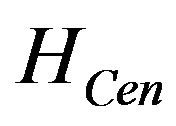 replaced by [11]
replaced by [11]
 (11)
(11)
where  and
and  is the occupation number of the spin-state
is the occupation number of the spin-state ,
,  describe the coulomb interaction among accumulated electrons. In the Hartree-Fock approximation, the distribution function
describe the coulomb interaction among accumulated electrons. In the Hartree-Fock approximation, the distribution function  of the central region in Equation (10) satisfies the following equation of motion
of the central region in Equation (10) satisfies the following equation of motion
 (12)
(12)
where  is the Fourier transformation of Green function
is the Fourier transformation of Green function  at contact
at contact . The last term in the right hand side of Equation (12) indicates the contribution of coulomb interaction of accumulated electrons to the matching condition (10) when we include the interaction in the Hamiltonian (11). In order to demonstrate this clearly, we concentrate on the study of a steady state, in which
. The last term in the right hand side of Equation (12) indicates the contribution of coulomb interaction of accumulated electrons to the matching condition (10) when we include the interaction in the Hamiltonian (11). In order to demonstrate this clearly, we concentrate on the study of a steady state, in which
 , and
, and , the matching condition (10) will reduce to
, the matching condition (10) will reduce to
 (13)
(13)
which is similar to the matching conditions of steady state in previous work. Suppose the distribution function in equilibrium case is , because of the coulomb interaction due to the accumulated electrons, the distribution function
, because of the coulomb interaction due to the accumulated electrons, the distribution function  in the steady state will deviate
in the steady state will deviate , that is
, that is
 (14)
(14)
where  is the deviation away from the equilibrium distribution function
is the deviation away from the equilibrium distribution function . According to Equation (13), the deviation in the steady state satisfy the following equation
. According to Equation (13), the deviation in the steady state satisfy the following equation
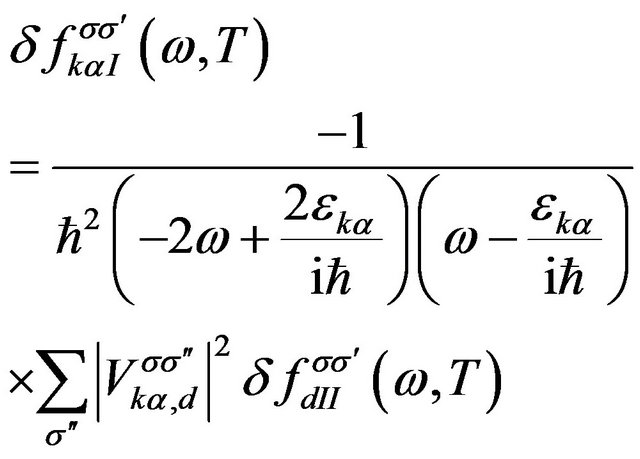 (15)
(15)
where the deviation of the distribution function in the central region  can be obtained from the equation of motion (12) when we adopt the steady condition, it is
can be obtained from the equation of motion (12) when we adopt the steady condition, it is
 (16)
(16)
where

and
 .
.
Substituting the above expression into Equation (15), we have
 (17)
(17)
This equation is helpful for us to compare with the results shown in Reference [10]. In Reference [10], the contribution of coulomb interaction due to accumulated electrons to the matching conditions was investigated in the steady state, the deviation of distribution function is given by
 (18)
(18)
where  is the scattering matrix which relate the distribution function of the contact
is the scattering matrix which relate the distribution function of the contact  and the distribution function of the central region
and the distribution function of the central region  in the equilibrium case,
in the equilibrium case,  , Equation (18) indicates that the deviation of
, Equation (18) indicates that the deviation of  in the contact contain two parts, the first part is contributed by the deviation of
in the contact contain two parts, the first part is contributed by the deviation of  in the central region, the second is by the change of scattering matrix which is induced by the coulomb interaction among accumulated electrons. Comparing Equation (18) with Equation (17), we can find that the first part corresponds to the first term in Equation (17) which is involved with the deviation of distribution functions, while the second part corresponds to the second term in Equation (17), the coulomb interaction among the accumulated electrons plays a important role in it. In fact, a microscopic model had been proposed to illuminate the results in Reference [10].
in the central region, the second is by the change of scattering matrix which is induced by the coulomb interaction among accumulated electrons. Comparing Equation (18) with Equation (17), we can find that the first part corresponds to the first term in Equation (17) which is involved with the deviation of distribution functions, while the second part corresponds to the second term in Equation (17), the coulomb interaction among the accumulated electrons plays a important role in it. In fact, a microscopic model had been proposed to illuminate the results in Reference [10].

